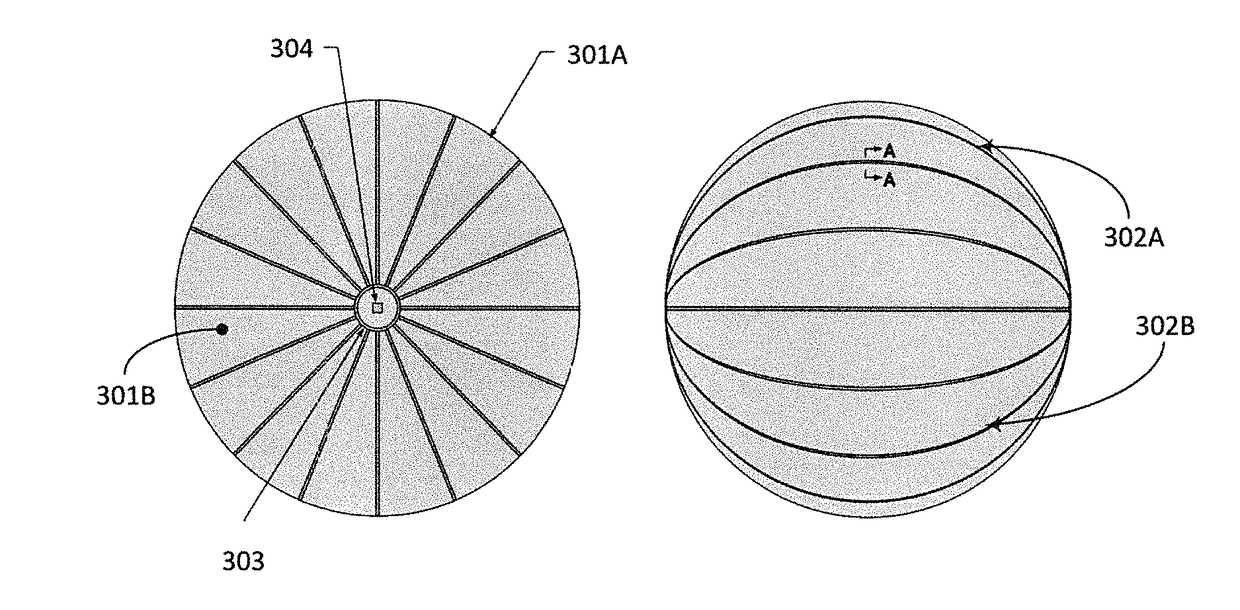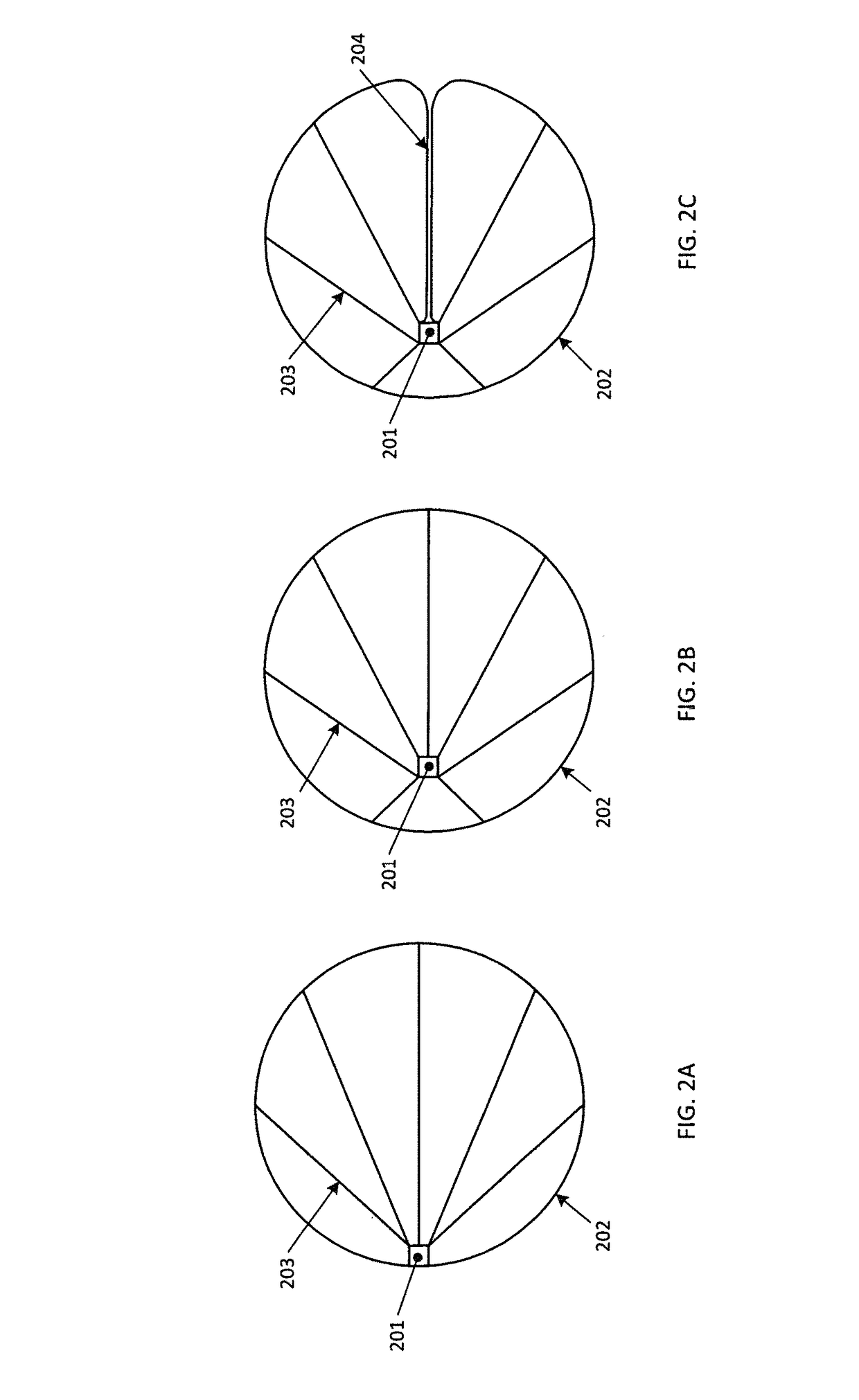Enveloping aerodynamic decelerator
a decelerator and aerodynamic technology, applied in the field of enveloped aerodynamic decelerators and decelerators, can solve the problems of limited size, many challenges involved, and current rigid atmospheric entry heat shields, or aeroshells,
- Summary
- Abstract
- Description
- Claims
- Application Information
AI Technical Summary
Benefits of technology
Problems solved by technology
Method used
Image
Examples
Embodiment Construction
[0037]The following description and the drawings illustrate specific embodiments sufficiently to enable those skilled in the art to practice the system and method described. Other embodiments may incorporate structural, logical, process and other changes. Examples merely typify possible variations. Individual components and functions are generally optional unless explicitly required, and the sequence of operations may vary. Portions and features of some embodiments may be included in or substituted for those of others.
[0038]The present design provide deceleration for space systems using a very large lightweight balloon envelope design, specifically an ultra-low ballistic coefficient entry system employing materials not normally considered for atmospheric entry. This technology protects a payload from the harsh atmospheric entry environment and slows the payload so that it can land without damage.
[0039]The present ultra-low density aerodynamic decelerator design significantly reduces...
PUM
 Login to View More
Login to View More Abstract
Description
Claims
Application Information
 Login to View More
Login to View More - R&D
- Intellectual Property
- Life Sciences
- Materials
- Tech Scout
- Unparalleled Data Quality
- Higher Quality Content
- 60% Fewer Hallucinations
Browse by: Latest US Patents, China's latest patents, Technical Efficacy Thesaurus, Application Domain, Technology Topic, Popular Technical Reports.
© 2025 PatSnap. All rights reserved.Legal|Privacy policy|Modern Slavery Act Transparency Statement|Sitemap|About US| Contact US: help@patsnap.com



